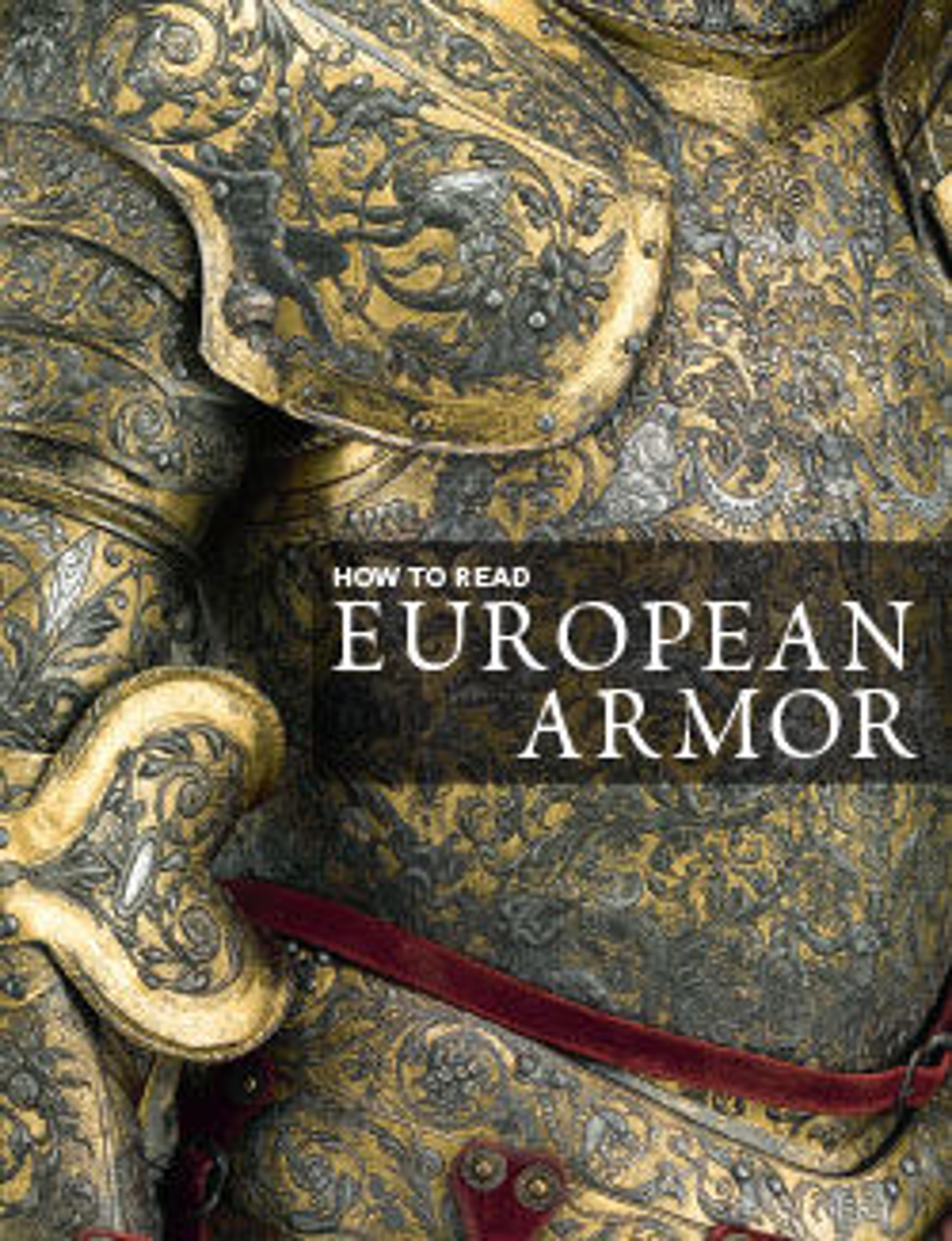Sallet
The high-domed helmet bowl has a sharp central ridge; in front the eye slit is cut into the recess above the protruding rim; in back this rim is swept into a sharp point. Nine large star-shaped rivets and two small ones secure the lining of the helmet. An armorer's mark (shield with a horseshoe and a crescent) is stamped at the front of the helmet to the left and right of the central ridge.
Sallets were one of the two basic types of helmets in use during the fifteenth century. They were less confining than the other type, the armet (see acc. no. 49.163.4), which enclosed the head completely, and for this reason they were preferred by light cavalrymen and even foot soldiers. When the man-at-arms was not in action, he wore his sallet pushed back, which left his face entirely free and allowed him better ventilation and easier breathing. The sallet worn in fighting position was pulled down over the face, with the fighter peering through the eye slit. However, the rim of the sallet covered the face only partially, and for the protection of chin and neck a special defense element, the bevor, was attached to the upper part of the breastplate and kept in position by a strap around the knight's neck. Some sallets have movable visors, which could be raised instead of pushing the entire helmet back; probably the most famous preresentation of such a visored sallet is Albrecht Dürer's engraving Knight, Death, and the Devil, 1513 (acc. no. 42.160.2).
The shield-shaped armorer's mark with a horseshoe and a small crescent is attributed by Bruno Thomas to Adrian Treytz the Elder of Innsbruck in the Tyrol. The Innsbruck master Jörg Treytz (active 1466–99) had a very similar mark with a horseshoe enclosing a Gothic letter I (for Jörg, George). The horseshoe was a popular shop sign for all workers in iron, such as blacksmiths and farriers.
Sallets were one of the two basic types of helmets in use during the fifteenth century. They were less confining than the other type, the armet (see acc. no. 49.163.4), which enclosed the head completely, and for this reason they were preferred by light cavalrymen and even foot soldiers. When the man-at-arms was not in action, he wore his sallet pushed back, which left his face entirely free and allowed him better ventilation and easier breathing. The sallet worn in fighting position was pulled down over the face, with the fighter peering through the eye slit. However, the rim of the sallet covered the face only partially, and for the protection of chin and neck a special defense element, the bevor, was attached to the upper part of the breastplate and kept in position by a strap around the knight's neck. Some sallets have movable visors, which could be raised instead of pushing the entire helmet back; probably the most famous preresentation of such a visored sallet is Albrecht Dürer's engraving Knight, Death, and the Devil, 1513 (acc. no. 42.160.2).
The shield-shaped armorer's mark with a horseshoe and a small crescent is attributed by Bruno Thomas to Adrian Treytz the Elder of Innsbruck in the Tyrol. The Innsbruck master Jörg Treytz (active 1466–99) had a very similar mark with a horseshoe enclosing a Gothic letter I (for Jörg, George). The horseshoe was a popular shop sign for all workers in iron, such as blacksmiths and farriers.
Artwork Details
- Title:Sallet
- Armorer:Attributed to Adrian Treytz the Elder (Austrian, Innsbruck, active ca. 1473–92)
- Date:ca. 1480
- Geography:Innsbruck
- Culture:Austrian, Innsbruck
- Medium:Steel
- Dimensions:H. 9 3/4 in. (24.8 cm); W. 11 1/2 in. (29.2 cm); D. 14 5/8 in. (37.1 cm); Wt. 6 lb. 2 oz. (2778 g)
- Classification:Helmets
- Credit Line:Rogers Fund, 1904
- Object Number:04.3.229
- Curatorial Department: Arms and Armor
More Artwork
Research Resources
The Met provides unparalleled resources for research and welcomes an international community of students and scholars. The Met's Open Access API is where creators and researchers can connect to the The Met collection. Open Access data and public domain images are available for unrestricted commercial and noncommercial use without permission or fee.
To request images under copyright and other restrictions, please use this Image Request form.
Feedback
We continue to research and examine historical and cultural context for objects in The Met collection. If you have comments or questions about this object record, please contact us using the form below. The Museum looks forward to receiving your comments.
